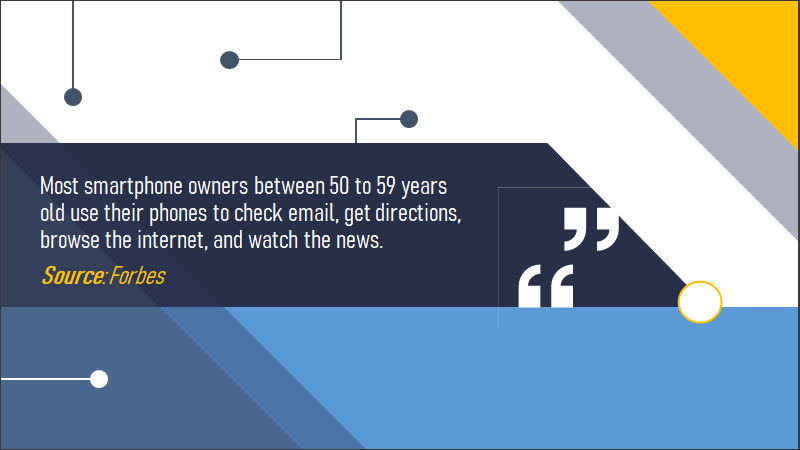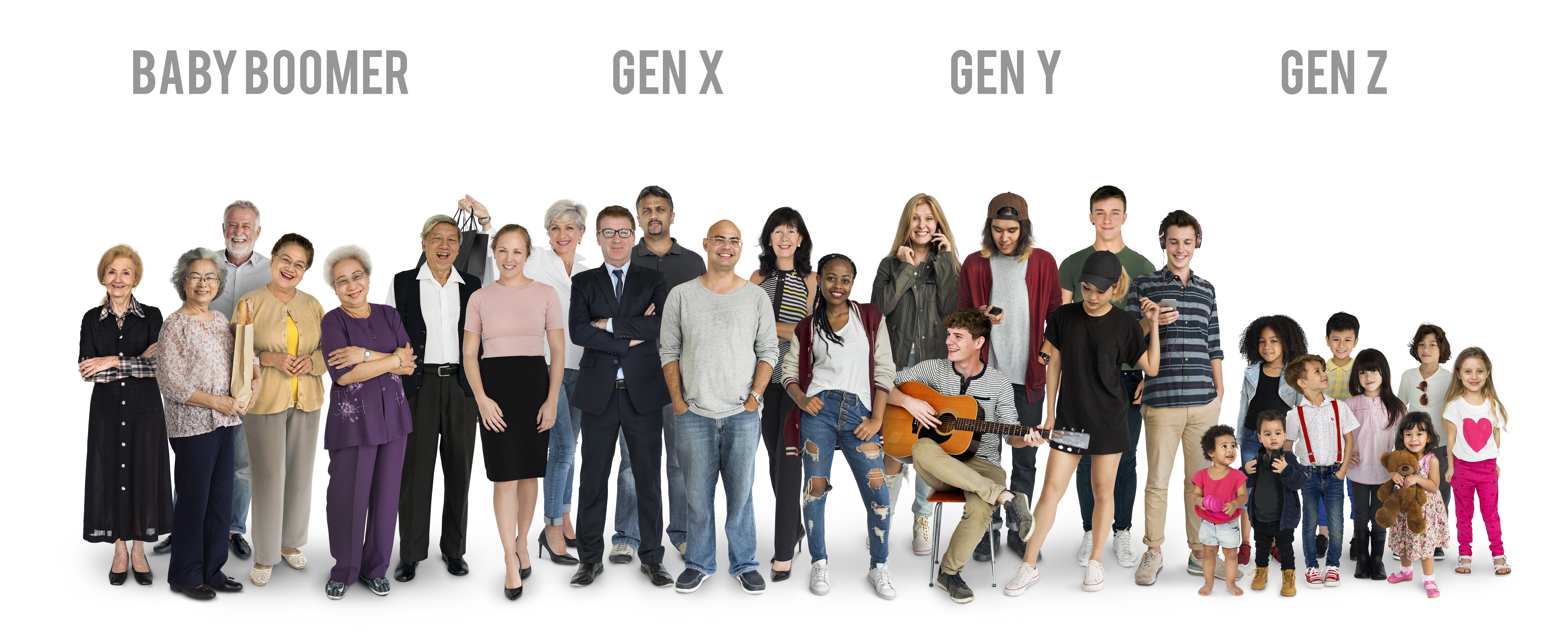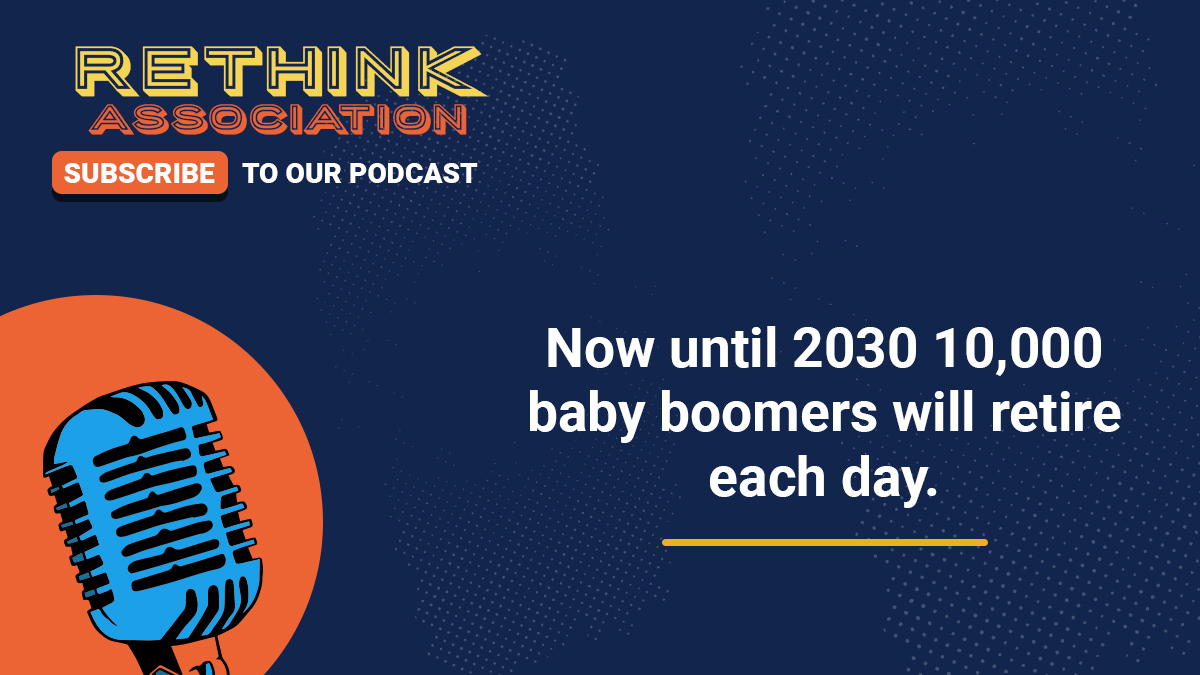Let's bust some generational myths
Lead Generation & Growth Strategies | member engagement | new generations
I'm a Millennial. And I can say with confidence, that even though my generational brand says I have the attention span of a goldfish, I have enough of it to write this blog 😜
So what do these generational labels really mean? How accurate are they? More importantly, how much do they come into play when it comes to your marketing efforts?
Our recent Spring VirCon 2021 session, You Sound Just Like My Mother—1.21 Gigawatts of Gen Z, which I had the fortunate opportunity to participate in, explored these questions and more, in a multi-generational, multi-disciplinary panel discussion.
In our session, we discussed how the existence and evolution of technology impacts how each generation (Boomers, Gen X, Millennials, and Gen Z) responds to marketing messages and interacts with the world around them.
Because, let’s be honest—stereotypes abound when it comes to the generational continuum. To put some clarity around an otherwise obscure picture, we went deep into these stereotypes to debunk some myths and reveal some helpful, strategic truths.

- Don't discount them—Include Baby Boomers in your digital marketing strategies, and spend time fine-tuning your images, interfaces, and messaging to appeal to their experience and interests.
- Long-form is a good thing—While Millennials and Gen Z may find quickly changing visual content (think Instagram stories and TikTok videos) most engaging, Baby Boomers are much more likely to take the time to read through your messaging from start to finish.
- Take the time to connect—Relationship building and brand loyalty are key with this group, so spending that time with them will pay off in the end. Methods like email or phone are more conducive to this longer-form communication, so it’s best to save your snappy SMS messages for your younger groups.
- Camaraderie counts—These are individuals that want to be part of a group for the long-game. They're nostalgic. They're devoted. And they'll join organizations to create long-lasting friendships with others sharing similar interests. Play into the networking and collaborative aspects of your organization whenever possible.
Gen Xers were the original “latch-key” generation, learning to take care of themselves from an early age. This experience of autonomy drives Gen Xers to find out answers for themselves and determine their own best course of action when it comes to their professional and personal lives.
As it relates to technology, many Gen Xers grew up with early versions of personal computers at home. They have a long-held familiarity with desktops but may juggle a number of devices in their work setting. Whereas their younger counterparts may feel more comfortable operating exclusively from mobile tech.
Gen Xers have seen technological and digital marketing trends come and go. They want to see what really stands the test of time, and shows effectiveness. This group is unlikely to jump on the latest social media bandwagon, but will continue on tried-and-true platforms like Facebook and LinkedIn.
How to get 'in' with them
- Push the flowery stuff aside—Lose the fluff, prove your value through your marketing programs, don't discount their experiences, and demonstrate that you mean business.
- Play to their ego—Gen Xers make up a substantial portion of the C-Suite within organizations. Recognize and appeal to their expertise, and demonstrate what your organization can do for their teams.
- Proof is in the pudding—Fend off that natural skepticism (or self-reliance) by proving the value of what you’re offering through real-world results. This is where testimonials, case studies, and 'meet a member' programs may come into play.
- Be device-mindful—Take the time to think through all of of the devices they’re using throughout their day—many juggle desktop, laptop, and handheld tech. Be thoughtful about the platforms you’re using and the delivery on each.
So yes, they do a lot of jumping around, meaning your message needs to be everywhere in a truly omnichannel, omni-format approach to capture their often divided attention. Think email, social, organic web content, SMS, videos, podcasts—Millennials will "scan-sume" all of these formats to find the answers they’re looking for.
Like their younger counterparts (Gen Z), Millennials are thorough researchers because they’ve grown up with access to lots and lots of information. When they discover your association across these platforms, they’ll start to dive into your content with more focus, so you have to keep their attention long enough for them to first trust you, and then come back for more.
How to get 'in' with them
- Show up—Be present, stay consistent, and stay interesting across all channels. A single email likely won’t do the trick, but an entire omnichannel campaign around the content of that email might.
- Solve, don't push—This generation will see right through anything that feels too “salesy” or forced. This is an extremely nurture-worthy group. They want to be wined and dined with thought leadership and different perspectives.
- Given them virtual connection—Millennials often seek out communities online. Providing a platform where these professionals can learn from their more seasoned counterparts and from one other (especially in the age of remote work) is a great way to keep them sticky with your organization.
- Don't shy away from controversy—Given their nature to sift through volumes of information, they're more than inclined to take in and reconcile diverse perspectives.
This is the group that came out of the womb, device ready. That readily-available wealth of information has impacted this generation in ways that make them appear to be “overly sensitive.”
However, taking a deeper look, it's clear that constant access to information often makes Gen Zers feel compelled or even burdened to educate themselves on every possible topic out there.
Knowing a lot about world issues, particularly environmental and social justice concerns, means caring a lot about things. “Burying their heads in the sand” is simply not an option for Gen Z. They want to be part of movements that matter, and they seek out organizations that contribute to meaningful causes.
Not only are Gen Zers inclined to research topics in great detail like their Millennial counterparts, they have grown to expect content served to them in a way that's curated, searchable, and bite-sized. Think TikTok, Instagram, and other similar platforms.
How to get 'in' with them
- Serve it up in bulk—Consider ways that you can aggregate content that is particularly applicable to Gen Z and serve it to them in e-blast, video, or social media formats. This delivery will capture their attention, lend credibility to your organization, and make Gen Zers feel like you’ve really taken the time to get to know them and their interests.
- Dabble in new platforms—This group knows social media inside and out and are early adopters of new platforms. They're quickly becoming the tech tastemakers for older generations.
- Lean into cause-based programming—Millennials and Gen Z are the future of the workforce, and both groups expect to see the companies and organizations they support standing up for something. If a commitment to social justice consciousness has just not been on the radar yet for your association, now’s the time to brainstorm.
- Exercise authenticity—Serve them curated content with a lens on social justice, legislation, and policy-making. But do it in the most authentic way. If you're just checking off a box or you're not truly standing behind your tune, you risk losing them entirely.

About Emily Nash
With a unique background in start-ups-to-studios, and consulting-to-corporate settings, Emily specializes in solving for unknowns, pioneering new services, and collaborating with marketers and strategists. In her community, she served on the board of American Institute for Graphic Arts as their Communications Director to help promote networking and mentorship opportunities for area designers and creatives. She’s also a co-producer for Rethink Association, a podcast for associations.







